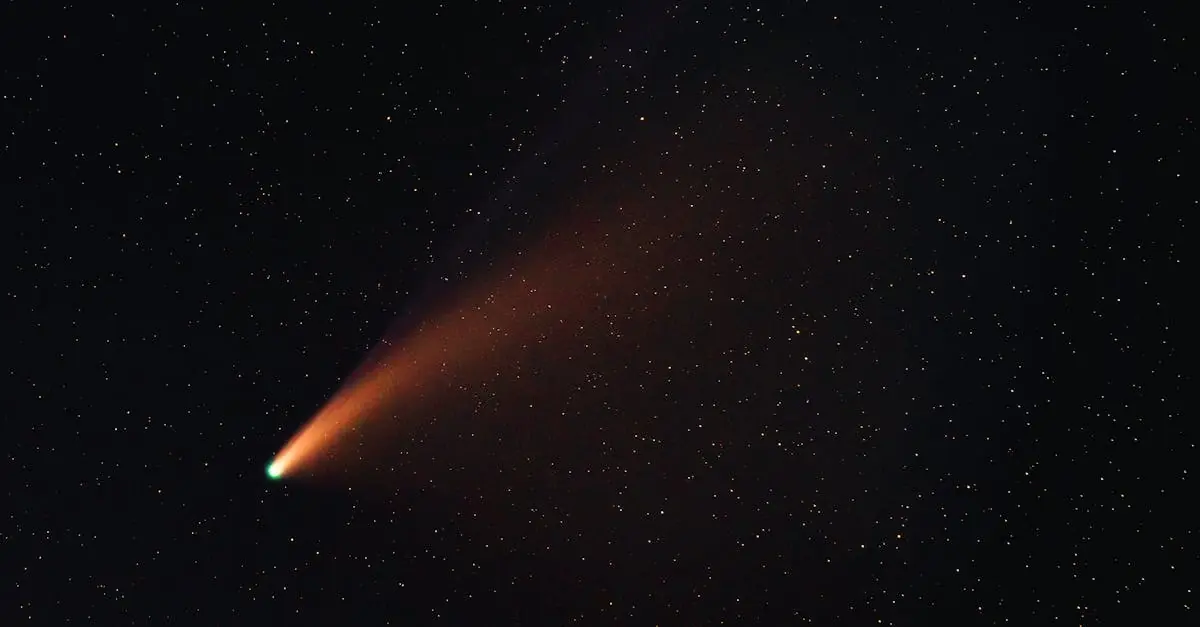When it comes to exploring the cosmos, planetary drilling systems are the unsung heroes of space missions. Imagine a futuristic drill that not only digs into alien soil but also uncovers secrets buried for eons. These high-tech marvels are designed to penetrate the surfaces of planets and moons, making them essential for scientists eager to understand the mysteries of the universe.
Table of Contents
ToggleOverview of Planetary Drilling Systems
Planetary drilling systems serve as pivotal instruments in space exploration. These systems enable the examination of subsurface compositions on various celestial bodies. Engineers design robotics within these drilling technologies to withstand harsh conditions, such as extreme temperatures and pressure variations.
Advanced drilling techniques permit the analysis of material samples. Data from these samples contribute to understanding planetary formation, geology, and potential for past or present life. Researchers employ both rotary and percussive drilling methods, with each modality serving specific geological contexts.
Key components include drill bits, sensors, and power units. Drill bits are crafted from durable materials like tungsten carbide, ensuring efficient penetration into rocky surfaces. Sensors monitor temperature, pressure, and material properties, providing real-time feedback during operations. Power units supply energy crucial for sustained drilling efforts.
Various missions utilize these systems, including the Mars rovers and lunar landers. The Perseverance rover exemplifies modern drilling technology, equipped with a sample collection system for soil and rock. Lunar missions focus on regolith sampling to investigate water ice presence beneath the surface.
Innovative designs address challenges inherent in extraterrestrial environments. Autonomous operation minimizes human intervention and increases mission safety. Continuous advancements enhance drilling capabilities, including improvements in precision and depth reach.
As research progresses, planetary drilling systems will unlock mysteries beneath alien terrains. Exploration objectives align with expanding knowledge about the universe and potential human habitation on other celestial bodies. Lastly, success in these endeavors contributes significantly to astrobiology, geology, and planetary science.
Types of Planetary Drilling Systems
Planetary drilling systems come in various forms, each designed to meet specific exploration needs.
Robotic Drilling Systems
Robotic drilling systems utilize advanced robotics to conduct drilling operations on celestial bodies. These systems often feature automated features that enhance precision and efficiency during sample collection. Engineers design them with unique drill bits capable of penetrating diverse surfaces. Equipped with sensors, these machines monitor environmental conditions in real time to adapt to challenges. The Mars rovers, for instance, represent successful implementations of robotic drilling, showcasing their ability to navigate complex terrains while conducting scientific analysis.
Autonomous Drilling Systems
Autonomous drilling systems operate independently, often after receiving initial instructions from mission control. These systems can perform tasks without human intervention, ensuring continuous operations in remote locations. Designed to handle extreme conditions, they enhance mission safety by reducing the need for direct supervision. Multiple spacecraft have deployed these systems to explore lunar and Martian surfaces. Innovations in AI and machine learning contribute to their functionality, allowing them to make decisions based on environmental data and previous encounters.
Key Technologies Used in Planetary Drilling
Planetary drilling systems rely on advanced technologies that ensure efficiency and precision in exploration. Understanding these components is crucial for comprehending their overall functionality.
Drill Bits and Tools
Drill bits play a pivotal role in the success of planetary drilling systems. Specialized materials, like tungsten carbide or diamond, enhance durability and performance in challenging environments. Various designs cater to different geological formations, including rotary bits for softer substrates and percussive bits for harder rocks. Tools equipped with integrated sensors capture real-time data about subsurface conditions, informing scientists about the composition and characteristics of materials encountered. Each tool’s design prioritizes adaptability, allowing for effective response to varying planetary conditions encountered during missions.
Power Systems
Power systems serve as the backbone for sustained drilling operations. These systems often utilize advanced battery technology and solar panels to ensure long-lasting energy supply. High-efficiency energy sources allow drilling equipment to function autonomously over extended periods. Additionally, robust power management systems prioritize energy distribution according to operational needs, optimizing performance and efficiency during missions. These innovations enable planetary drills to perform critical tasks even in harsh environments, ensuring reliability across various space exploration activities.
Applications of Planetary Drilling Systems
Planetary drilling systems play vital roles across various domains, particularly in resource extraction and scientific exploration. Their advanced technologies enhance our capabilities in these areas.
Resource Extraction
Resource extraction on celestial bodies relies on planetary drilling systems to locate and retrieve valuable materials. These systems target resources such as water ice, essential for sustaining future human missions. Extracting water from lunar or Martian soils supports in-situ resource utilization, reducing the need for transporting supplies from Earth. Mining for minerals and other elements enables potential building materials for habitats or fuel sources for space missions. Exploring these resources also opens economic opportunities, driving interest in the commercialization of space exploration.
Scientific Exploration
Scientific exploration heavily benefits from the insights gained through planetary drilling systems. These systems uncover subsurface conditions that inform researchers about the geology and history of celestial bodies. Analyzing samples helps identify the presence of organic compounds or water, crucial for understanding past life. Investigating various geological formations contributes to knowledge about planetary evolution and differentiation. The data collected through drilling not only supports astrobiology but also aids in developing models for climate and atmospheric studies, enriching our comprehension of the universe.
Future Trends in Planetary Drilling Systems
Emerging innovations shape the landscape of planetary drilling systems. Advanced robotics and AI play crucial roles in enhancing the efficiency and autonomy of drilling operations. Scientists increasingly focus on designing versatile drill bits that can adapt to varied geological formations, improving sample collection reliability.
Incorporation of unconventional materials improves system performance. Utilization of composite materials increases drill durability and reduces wear in extreme environments. Future technologies promise real-time data analysis, enabling drilling systems to make informed decisions autonomously.
Adoption of renewable energy sources enhances sustainability. Solar panels and advanced battery technology support long-term operations on Mars and the Moon. Such systems optimize energy consumption, ensuring continuous functionality without significant human intervention.
Collaboration among international space agencies drives innovation. Joint missions engage multiple entities, pooling resources and expertise. This broadened approach accelerates the development of next-generation drilling systems, maximizing their potential for exploration.
Exploration of subsurface oceans on icy moons like Europa presents new frontiers. These environments require specialized systems capable of penetrating thick ice layers. Research teams are actively developing thermal drills that can efficiently access these hidden water sources.
Development of enhanced communication systems allows for deeper exploration. Real-time data transmission will become standard, enabling immediate analysis and response during operations. Such capabilities foster collaboration among global research teams.
Investment in training programs prepares the next generation of engineers and scientists. Fostering expertise in planetary drilling ensures continued advancements in technologies for exploring other worlds. These initiatives strengthen the foundation for the future of space exploration and its associated scientific endeavors.
Conclusion
Planetary drilling systems represent a pivotal advancement in the quest to explore and understand our universe. Their ability to penetrate the surfaces of planets and moons unlocks vital information about geological formations and potential resources. As technology evolves these systems will become even more efficient and autonomous.
The integration of advanced materials robotics and AI is revolutionizing how scientists approach extraterrestrial exploration. With each mission the knowledge gained not only enhances our understanding of celestial bodies but also paves the way for future human habitation and resource utilization.
The collaborative efforts among international space agencies and the focus on sustainable energy sources position planetary drilling systems as essential tools for the next era of space exploration. The future holds immense possibilities as these technologies continue to advance unlocking the mysteries of the cosmos.






